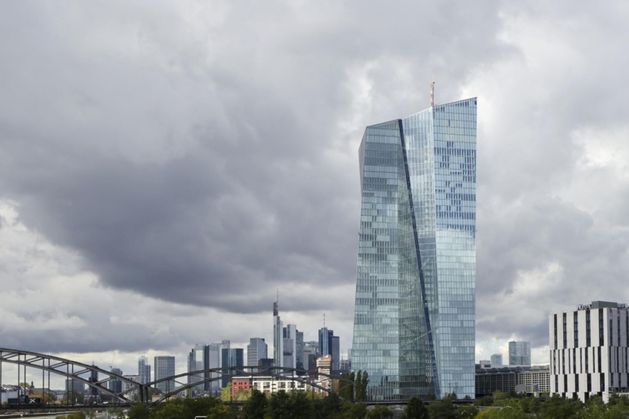Bussiness
Euro draws near a two-year low as European Central Bank gets ready to outpace peers with rate cuts

Sterling hit its strongest level against the euro since before 2022’s “mini-budget” crisis of then prime minister Liz Truss. The market now fully expects the European Central Bank (ECB) to cut rates on Thursday, June 6.
Doubts have grown whether the Bank of England will cut rates in August or even later in the year.
The euro yesterday dropped to 84.48p, its lowest since August 2022, and fell against the US dollar to $1.08 after German regional data pointed to the possibility of inflation across the eurozone coming in lower than expected when numbers come out on Friday. It stands in contrast to the situation in Britain.
The euro hit 84.48p, fell against the US dollar to $1.08
“The UK has had a particularly difficult time with inflation, and services inflation and wage growth are not where the Bank of England wants to see them,” Bank of Ireland chief economist Conall MacCoille said.
That pushes back the prospect of a UK interest rate, which in turns boosts sterling relative to the euro.
Mr MacCoille also pointed to the UK’s July general election as a possible positive pressure on sterling. UK Labour looks set to romp home, ending a period of chaotic Conservative Party rule – and potentially heralding more normalised relations with the EU.
In the medium-term, the more rapid decline in inflation across the eurozone versus both the UK and US means interest rate setters in the ECB are now on course to cut at different paces, weakening the euro.
A weak euro could cause inflation, especially with energy priced in dollars, but the risk is relatively low, according to Mr MacCoille. He pointed to 2015 when inflation remained low despite a strong dollar.
“The euro area economy is quite closed,” he said.
The boost to the euro will mean a short-term gain, at least for Irish farmers and others selling into the UK – although prices in UK supermarkets tend to respond quickly when currencies fluctuate.
However, major volatility between currencies is not on the cards, says Justin Doyle of specialist bank Investec.
“Divergence is too strong a word for the differences between the major central banks, but the ECB is now the more dovish of the three,” he says.
That means, based on current data, he thinks the euro is more likely to move towards 84p than 86p, which will boost Irish exporters.
“A decent move below 85p would be really good for Irish exporters,” he said.
‘A decent move below 85p would be really good for Irish exporters’
The euro is also more likely to approach parity with the dollar, but all moves are dependent on the path of inflation and the relative size and number of interest rate cuts.
“It’s still all about inflation – and inflation in the US and UK has been sticker,” he said.
The ECB is on course to cut interest official rates next Thursday by 0.25pc, beginning a process of reversing 10 rate hikes imposed in 2022 and 2023.
Thursday’s cut is already priced in to the market, says Mr Doyle, who adds that traders will be listening for the rhetoric afterwards from the rate setters, to guide their future plans.










